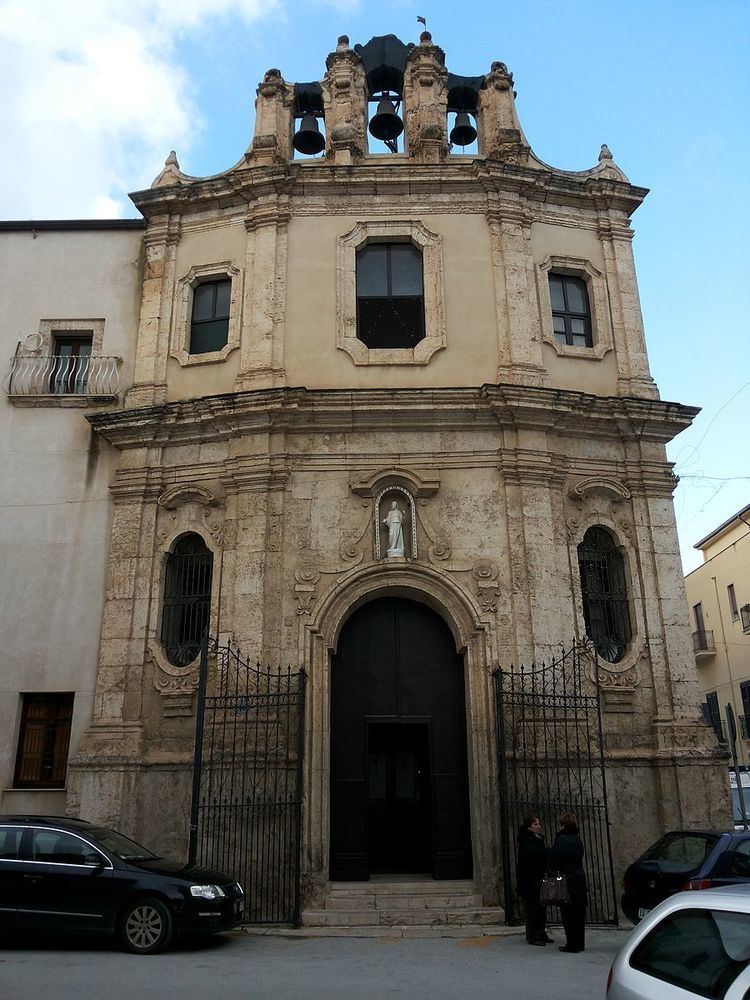Affiliation Minims Municipality Alcamo State Italy Province Province of Trapani | Rite Catholic Territory Alcamo Region Sicily Groundbreaking 1550 | |
 | ||
Location Alcamo, province of Trapani, Italy Similar Scala dei Turchi, Necropoli di Realmese, Grotte di Scurati, Castello di Venere, Acquarossa - Italy | ||
The Church of the Holy Crucifix (or church of Saint Francis of Paola) is a Catholic church in Alcamo, in the province of Trapani.
Contents
There is the Confraternity of the Most Holy Crucifix, which in 1565 got the benefit of Fiera Franca from the count of Modica.
Adjoining the church there was the Friary of saint Francis of Paola.
Foundation
It was founded in 1550 in the name of the Most Holy Crucifix by the nobleman Pietro Tabone, grandfather of the poet Sebastiano Bagolino’s, who was buried in this Church. In 1542 Tabone, after his request, had a piece of land by the municipality in order to build a Chapel dedicated to the Most Holy Crucifix, patron saint of the town at that time.
History
The small chapel was built in 1550, without any consent by the Bishop of Mazara del Vallo; it was approved only two years after its construction. Tabone had the right to enlarge, pull down and rebuilt it, besides he could nominate the Rector and found a Confraternity of the Most Holy Crucifix. In 1575 there was a terrible plague: the population in Alcamo, about 7,700, was cut in half, according to the historian Ignazio De Blasi and a lot of people were buried in the cemetery Sant'Ippolito, in the western suburb. As the old hospitals of San Vito and Santo Spirito were not sufficient to receive so many plague victims, they set up a new one in the same street of the Chapel.
Owing to their economic difficulties which did not allow to complete the Church, in 1596 the administrators of the Confraternity decided to assign the Church to the Order of Minims of Saint Francis of Paola. In 1608 the Minims accepted the donation and built the adjoining friary which they maintained until 1866; since 1870 it hosted the Royal Gimnasium, and, after 1870, the Civic Hospital.
The Minim Fathers distinguished themselves both for their religious activity and for the social engagement for the quarter; in 1780 forty-five priests from Alcamo signed a request to king Ferdinand III asking not to suppress the friary, as it had happened to other religious orders some years before. The cloister was not closed, but after the Unification of Italy, Vittorio Emanuele II, king of Italy, abolished all religious orders and their properties were seized. Finally in 1926 the Church became a parish, dedicated to saint Francis of Paola.
Works
The façade, dated 1695, has a convex form, a typical characteristic of Rococo Style. The church is with one nave and has five altars; in 1750 it was embellished with stuccoes by Nicolò Curti.
Inside it there the following works:
On the high altar: the Crucifix, a wooden sculpture made in the 19th century, made by Francesco Marino from Trapani.
On the left side:
On the right side:
On the nave walls there are four old paintings, by an unknown author and with stucco frames, representing some episodes of Saint Francis of Paola’s life:
In the sacristy:
